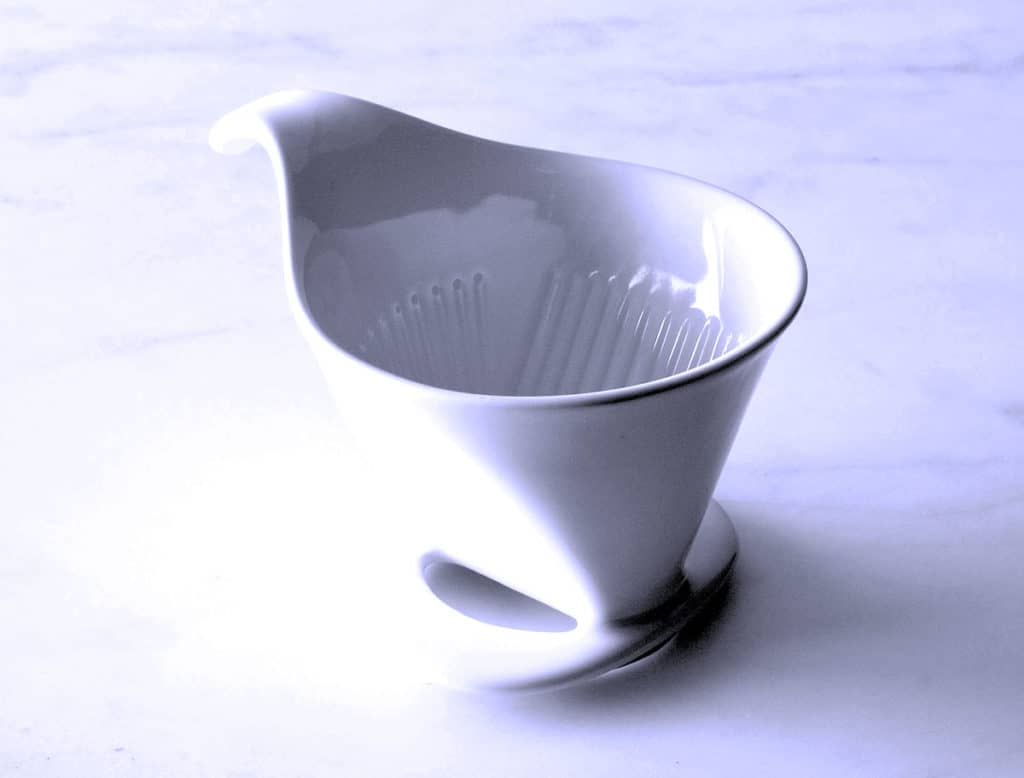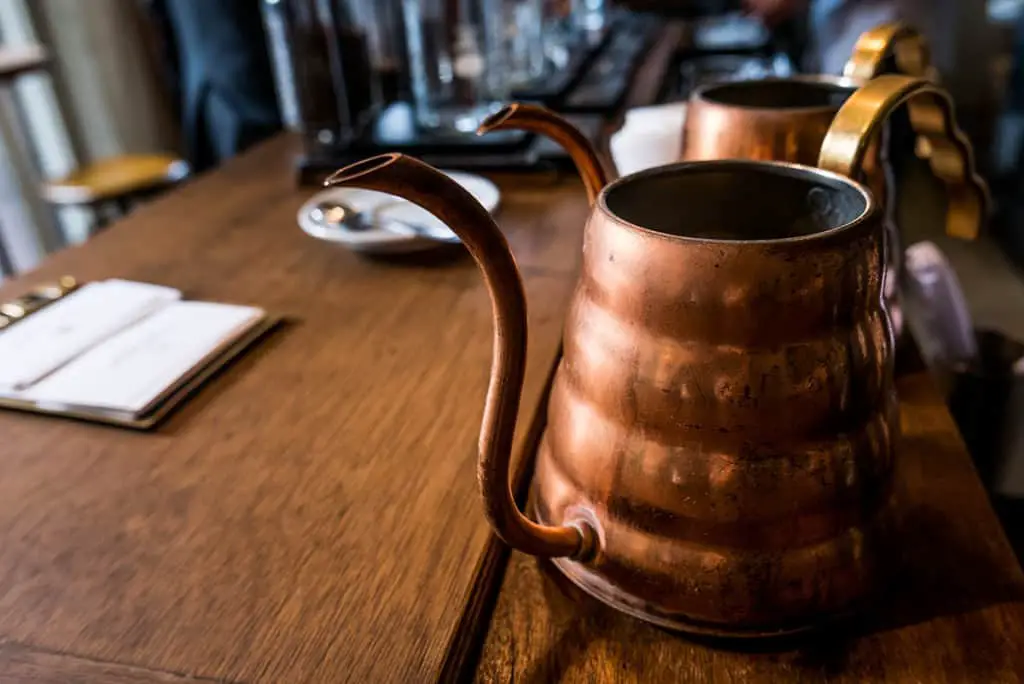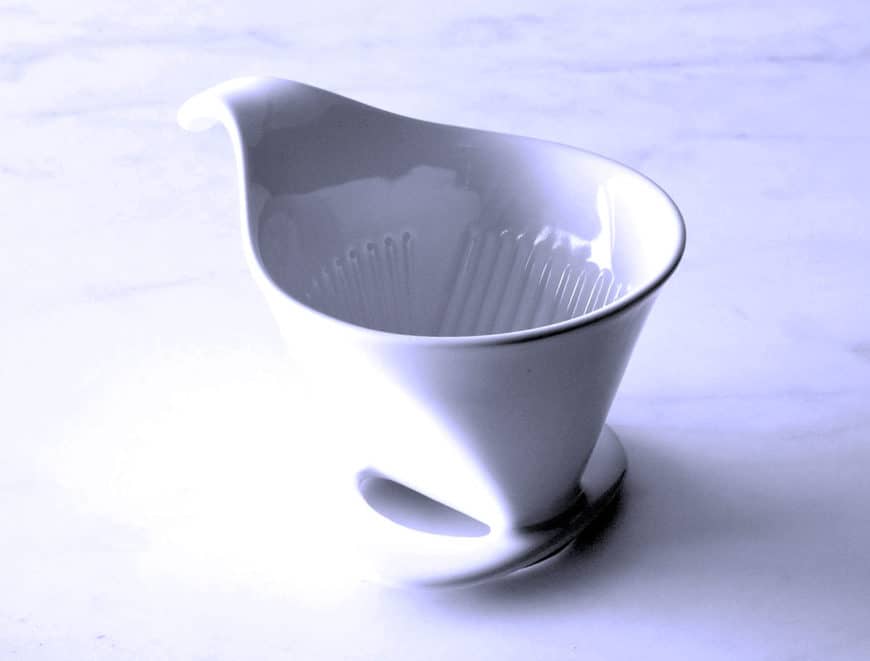
Welcome to the world of pour-over coffee, where you’re the master of your brew, and every cup is a chance to craft something extraordinary. If you’re new to this game or just looking for a fuss-free way to elevate your morning joe, the Bee House Dripper is your perfect partner. Known for its simplicity and forgiving nature, this little ceramic wonder takes the intimidation out of pour-over brewing—unlike, say, the finicky Hario V60. Whether you’re a coffee newbie or a seasoned sipper, this guide will walk you through everything you need to know to brew a stellar cup with the Bee House Dripper. Let’s dive in!
The Bee House Dripper: What Makes It Special?
The Bee House Dripper is a pour-over coffee maker with a flat bottom, two drainage holes, and a design that’s as practical as it is pretty. Typically crafted from ceramic (though plastic versions exist), it comes in small (#1 filter) and large (#2 or #4 filter) sizes, making it versatile for solo cups or a small crowd. Its wedge-shaped body and dual holes regulate water flow, so you don’t need barista-level pouring skills to get a balanced extraction. Plus, that ceramic build retains heat like a champ, keeping your brew temperature steady—a key to unlocking rich flavors. If you’re after a clean, sweet cup without the complexity, this dripper’s got your back.
A Quick History of Pour-Over Coffee
Pour-over coffee isn’t some trendy fad—it’s been around since 1908, thanks to Melitta Bentz, a German coffee lover tired of gritty cups. She punched holes in a brass pot, lined it with her son’s blotting paper, and voilà: the first pour-over brew was born. Patented that same year, her invention sparked a coffee revolution, with Melitta and her husband selling 1,200 filters at the Leipzig fair in 1909. Today, the Bee House Dripper carries that legacy forward, pairing old-school simplicity with modern Japanese design. It’s all about control—over water, timing, and taste—which is why coffee enthusiasts swear by it.
How to Brew Coffee with a Bee House Dripper: Step-by-Step
Ready to brew? Here’s how to make a perfect cup of pour-over coffee with your Bee House Dripper. We’ll use a standard single-serving recipe: 22 grams of coffee to 370 grams of water (a 1:16 ratio). Adjust as needed, but this is a great starting point.
- Heat Your Water: Fill your kettle and bring it to a boil. Aim for 200–205°F (about 30 seconds off the boil) for optimal extraction. Too hot, and you’ll scorch the grounds; too cool, and the flavors will fall flat.
- Weigh Your Beans: Grab 22 grams of whole-bean coffee. A digital scale is your friend here—precision matters in pour-over land.
- Grind It Up: Grind your beans to a medium-coarse consistency, like coarse sand or table salt. This suits the Bee House’s flow rate—finer grinds might clog it, while coarser ones could under-extract.
- Prep the Filter: Place a #2 or #4 paper filter (depending on your dripper size) into the Bee House. Rinse it with hot water to wash away any papery taste and preheat the dripper. Dump the rinse water from your mug or carafe.
- Add the Grounds: Pour your ground coffee into the wet filter. Give it a gentle shake to level the bed for even brewing.
- Set It Up: Place the dripper on your mug or carafe. The Bee House’s base has handy cutouts, so you can peek at the coffee level as it drips.
- Bloom Time: Start your timer and pour just enough water (about 50–60 grams) to wet all the grounds. Move in a slow, circular motion to saturate evenly. Let it sit for 30 seconds—this “bloom” lets the coffee release gases, setting the stage for a tastier brew.
- Pour the Rest: Now, add the remaining water (up to 370 grams total) in a steady, circular pour. Keep the stream gentle and aim for the center, spiraling outward to hit all the grounds. Finish pouring by around 2 minutes; the full drip should take 3.5–4 minutes.
- Enjoy: Once the dripping stops, remove the dripper, give your coffee a swirl, and sip away. If it finishes faster than 3.5 minutes, slow your pour next time. If it drags past 4, speed it up or coarsen your grind.
Why a Gooseneck Kettle Is Your Brewing BFF

You’ll hear pour-over fans rave about gooseneck kettles, and for good reason. Unlike regular kettles that glug water unpredictably, a gooseneck’s slim, curved spout gives you pinpoint control. This means you can pour slowly and evenly, hitting every ground just right. Sure, you can use a standard kettle with the Bee House (it’s forgiving!), but a gooseneck—like the Bonavita Electric or Fellow Stagg Stovetop —takes your consistency to the next level. Electric models offer quick boiling and temp settings, while stovetop ones are durable and budget-friendly. Pick what suits your setup!
Brew Ratio Cheat Sheet
Not sure where to start with coffee-to-water ratios? Here’s a quick table to guide you:
| Coffee (grams) | Water (grams) | Ratio | Taste Profile |
|---|---|---|---|
| 22 | 330 | 1:15 | Stronger, bolder |
| 22 | 370 | 1:16 | Balanced, classic |
| 22 | 410 | 1:17 | Lighter, more delicate |
Experiment to find your sweet spot—small tweaks can transform your cup!
Tips for Mastering Your Bee House Brew
Want to take your pour-over game up a notch? Try these pro tricks:
- Play with Pour Speed: Test slower or faster pours over a few brews to dial in your preferred flavor. The Bee House’s design makes it easy to experiment without disaster.
- Match Your Mug: Ensure your dripper fits your cup or carafe. A mismatch can mess with brew depth—too shallow flattens the taste, too deep muddies it.
- Freshness Counts: Use beans roasted within the last two weeks and grind right before brewing for max flavor.
- Water Quality: If your tap water tastes off, switch to filtered. Bad water = bad coffee, no matter how good your setup.
- Clean Up: The Bee House is dishwasher-safe, but a quick rinse works too. Keep it pristine for pure taste.
Why Choose the Bee House Dripper?
Compared to other pour-over methods like the V60 or Chemex, the Bee House stands out for its ease and reliability. Its flat bottom and dual holes tame the water flow, so you don’t need a perfect pour to get a great cup. The ceramic body holds heat better than plastic drippers, and it’s less fragile than glass options. Plus, at around $24 on Amazon, it’s an affordable way to dip your toes into pour-over coffee. It’s not as customizable as some drippers, but for a clean, consistent brew without the learning curve, it’s tough to beat.
Final Thoughts
Brewing coffee with a Bee House Dripper is like having a chill barista buddy—it guides you to a delicious cup without judging your technique. Whether you’re savoring a quiet morning or impressing a friend, this method delivers control and simplicity in one neat package. So grab your dripper, some fresh beans, and start pouring. Your perfect coffee is just a few minutes away!

